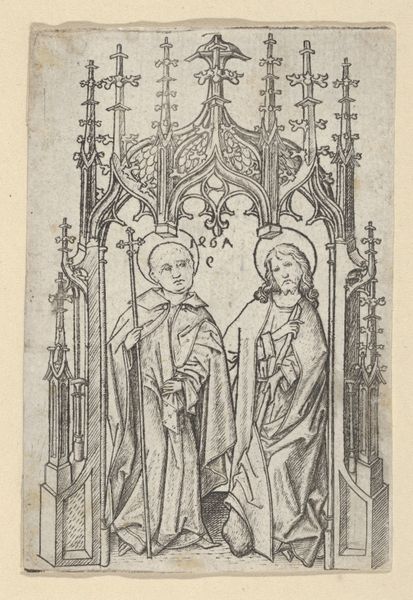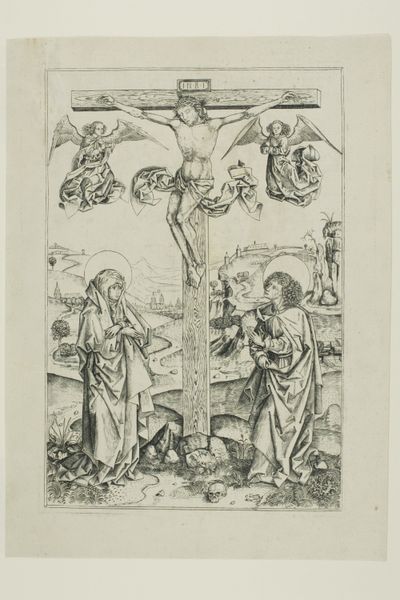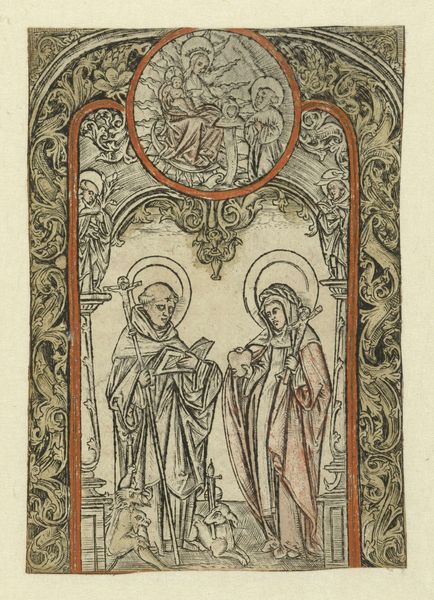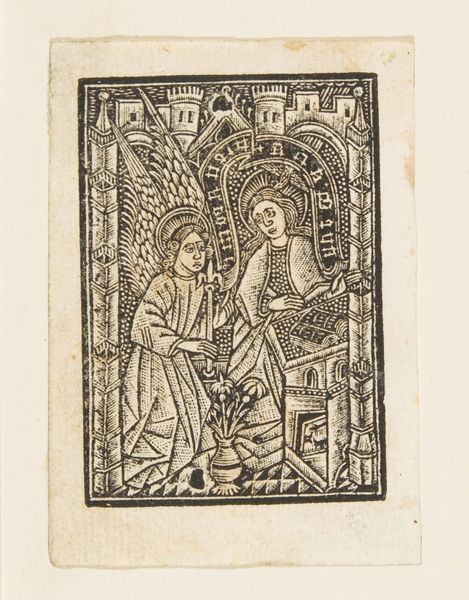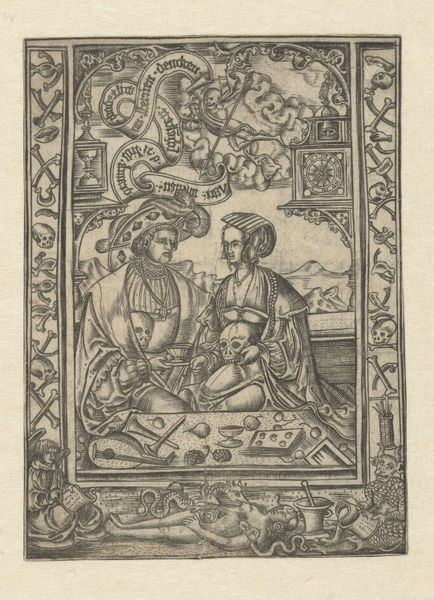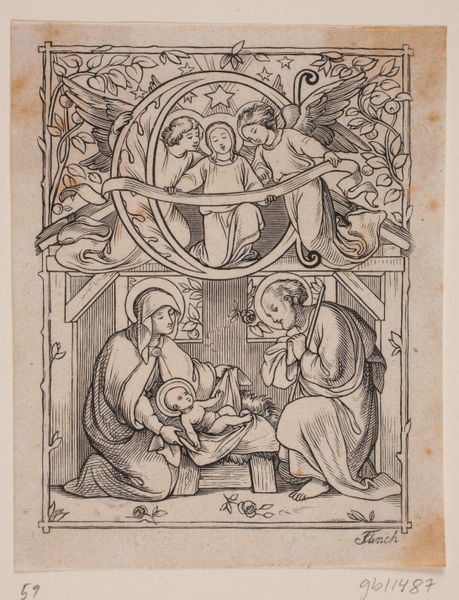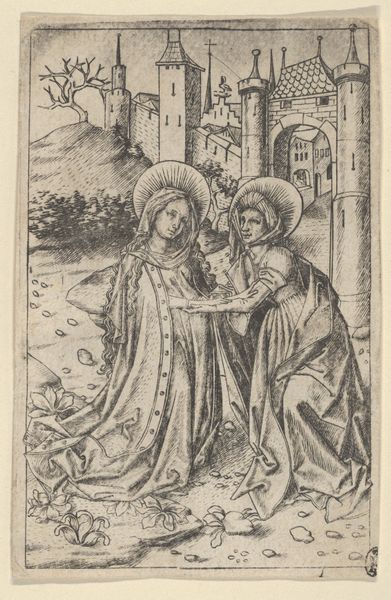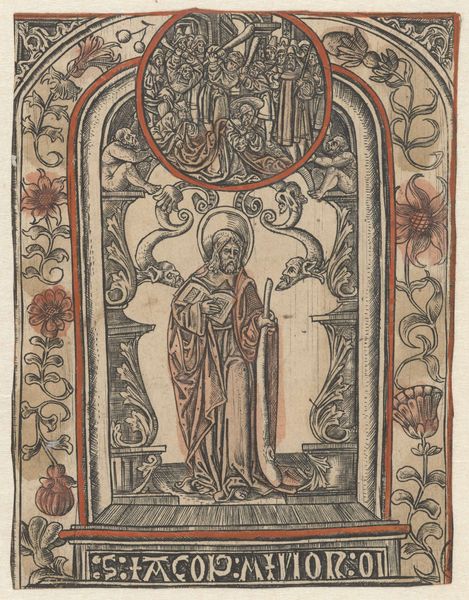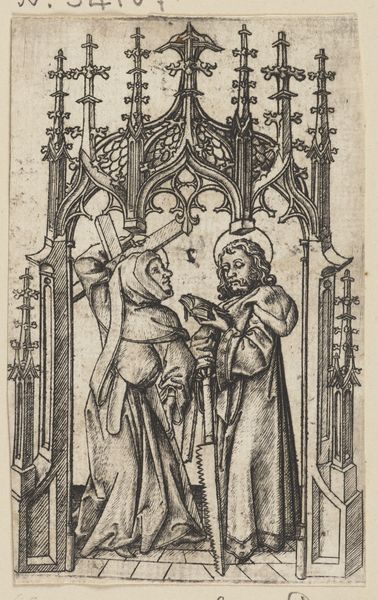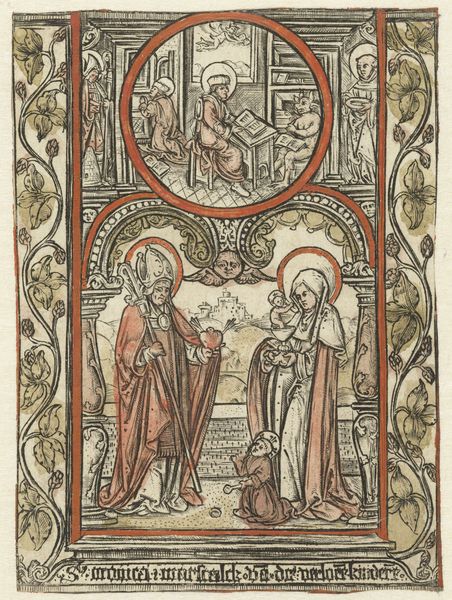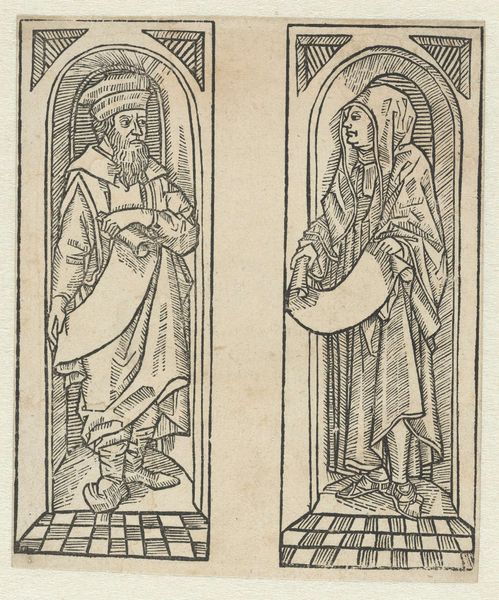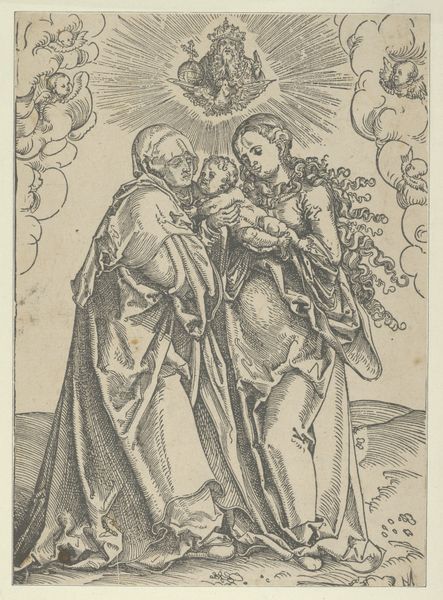
print, engraving
# print
#
figuration
#
line
#
engraving
Dimensions: plate: 9.5 × 6.5 cm (3 3/4 × 2 9/16 in.) sheet: 15.7 × 10.1 cm (6 3/16 × 4 in.)
Copyright: National Gallery of Art: CC0 1.0
Master S created this engraving of Saint Mary Magdalene and Saint John the Evangelist in the first half of the sixteenth century. The image deploys a common visual trope of the time, showing the two saints beneath a decorative archway and angel. But what might this image have meant to its early viewers? We know that the inscription "pro. dextro choro" indicates it was intended for the right side of the choir. We know from surviving account books that prints were often used in monastic settings, perhaps to encourage particular forms of devotion. Sixteenth-century Germany was undergoing profound religious and political changes with the rise of the Reformation. Master S worked in a specifically Catholic artistic tradition but, equally, prints were becoming increasingly accessible to wider audiences. Images such as these raise important questions about the public role of art in shaping religious belief and social order during this turbulent period of European history. By studying sources, such as religious treatises, personal letters, and institutional records, we can start to appreciate the complex interplay between art, faith, and society.
Comments
No comments
Be the first to comment and join the conversation on the ultimate creative platform.
